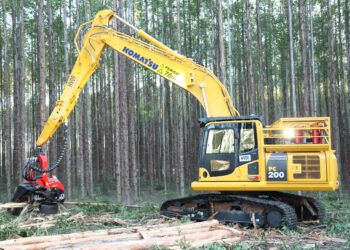Equipment finance broker and intermediary deals have been on the rise in the past month as more banks tightened credit requirements amid rising interest rates.
Brokered transactions, in which a broker connects a vendor looking to sell equipment to a consumer with a lender, play a key role in the equipment finance industry, Steven Geller, owner of equipment finance intermediary and management consulting firm Leasing Solutions, told Equipment Finance News.
The number of deals brokered by Leasing Solutions doubled in the past month, he said.
Brokers are “having trouble getting deals done, so they’ll tell me, ‘I went to three lenders and they turned it down. Do you have anybody else to do the transaction?’” Geller said.
The role of brokers grew this summer when the collapse of Silicon Valley Bank and Signature Bank caused some bank lenders and investors to pull back, although Geller said others are now benefitting from the opportunity.
“We’ve gone through part of that cycle, so lenders may be coming back, and there are some lenders starting to get into the business as they see opportunities,” he said. “The non-bank lenders are seeing more business as well.”
Intermediaries, such as Leasing Solutions, and brokers are also seeing a rise in business as other brokers seek additional funding sources for repeat clients amid bank credit tightening and lender portfolios filling, Geller said.

Broker-to-broker transactions rise
Brokers are also turning to other brokers to complete transactions as banks become more stringent, Geller said, which can pose a problem for lenders.
“When you have an intermediary broker, they’re trying to get the deal done in the least amount of time and effort, and they don’t understand the transaction or delve into the customer’s finances enough,” which can lead to missed payments, Geller said.
“When we sell a transaction, we sell the payment,” Geller said. “Everyone wants to know what the rate is. The rate is irrelevant.”
Brokers take their commissions from the difference between the interest rate charged to the consumer and the interest rate the lender offers, Geller said. Brokers working together often split the commission, he said.
Broker-to-broker transactions happen “more often than we like to think,” Geller said.
Many lenders don’t know that they’re buying a broker-to-broker transaction, he said.
“I have some lenders that I meet who say, ‘Well, we don’t do broker-and-broker transactions.’ And my response to that is, ‘I’m sure you do. You just don’t know it,’” he said.
While 90% of the “thousands” of brokers in the $1.2 trillion equipment finance industry are reputable, unsavory brokers can create issues, Geller said.
Brokers, lenders and vendors/dealers can learn to spot the small percentage of bad brokers by doing due diligence and asking the proper questions, such as who they have worked with and how long they’ve been in the industry, he said.











